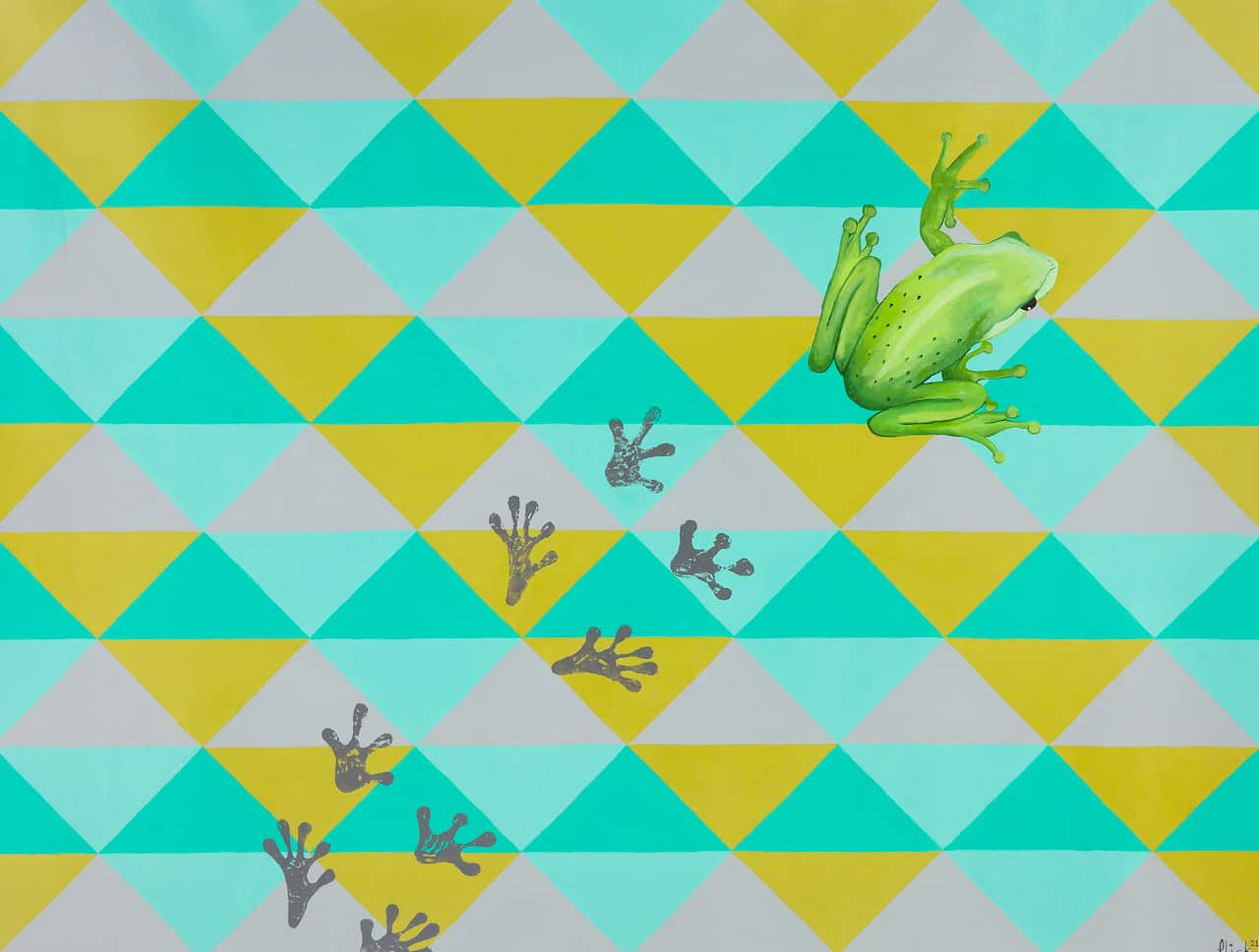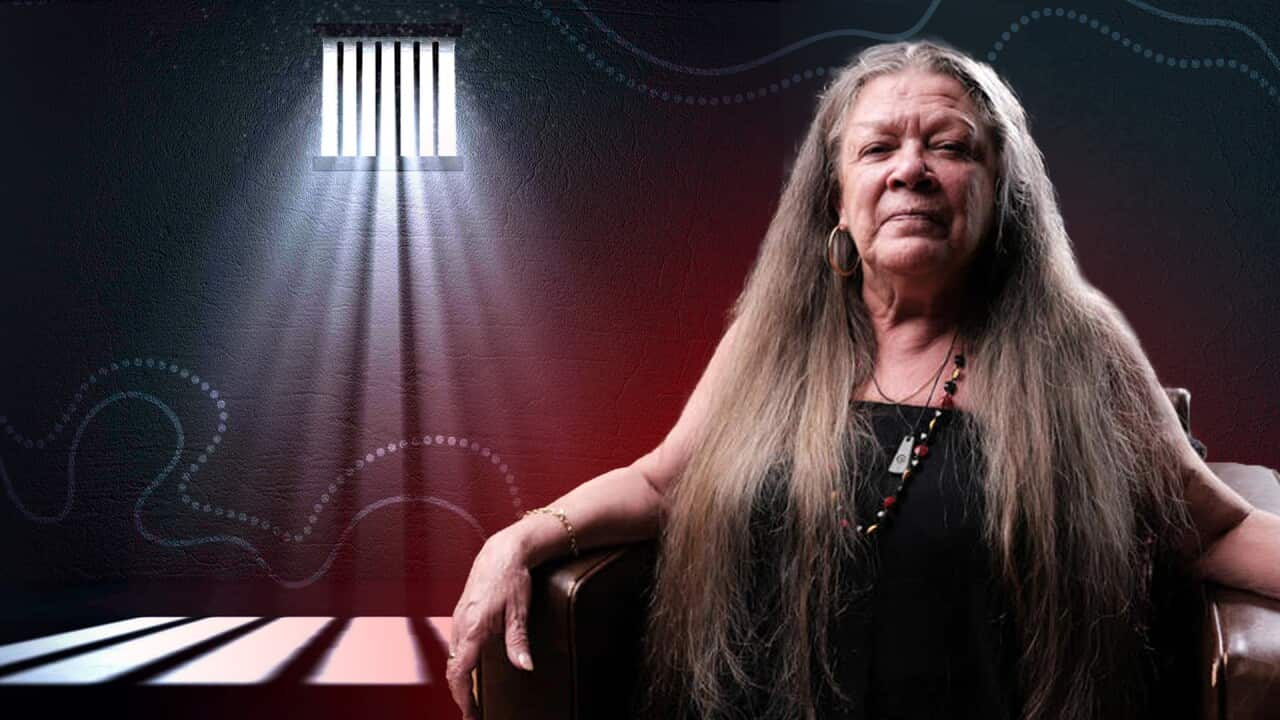Melbourne mother, Felicity Chafer-Smith is an incredible artist.
A proud Ngarrindjeri woman, her work is entirely focused on her culture and is featured in an exhibition alongside 350 other Indigenous artists.
The exhibition, Confined 13, brings together 400 artworks created by incarcerated and formerly incarcerated Indigenous people from across 14 prisons in Victoria.
Ms Chafer-Smith first picked up a paintbrush in 2018 — while she was serving a sentence at Victoria’s Dame Phyllis Frost Centre.
“I was doing my last sentence inside, I’d done a few before that but this time I finally made it down to the Koorie art class,” she told NITV.
“It happened to be the day where the Torch Project officers were there . . . I was in awe.
“I thought it was a great opportunity to learn more about my family and where I come from — all those things I hadn’t had a chance to learn before.”
The Torch works in 14 prisons across Victoria teaching art and culture at once. The program sells each of the artworks created providing the artist with 100 per cent of the profits.
Cultural connection despite distance
Despite it being a Victorian-based program, Ms Chafer-Smith was provided an equal opportunity to learn about her Ngarrindjeri heritage.
“I’m from South Australia, and it’s a Victorian program so there wasn’t too much. But the officer went back to the research team and they pulled together a Ngarrindjeri book specifically at my request.
“It meant I could learn about my language, my totems. I learned to weave and learned about my culture as a whole.”
As Ms Chafer-Smith learned, parts of her life started to make more sense.
“I found out we have a couple of totems, but the one I really identify with is a pelican,” she said.
“Wherever I have been in my life, there’s always been a pelican following me. It makes so much sense now.
“It’s even more special now I know why they’ve been stalking me around, always. They were watching me and they still are!”
Despite being disconnected from family, she developed a strong connection to her culture.
"My grandmother passed away a couple of years ago and with her passing a whole wealth of knowledge was gone,” she said.
"If I was out, I could text my Aunties and Uncles, and ask them questions but because I was inside, I couldn't contact them.
“It was amazing to still have that option to learn, and still progress in my journey of connecting to my culture through a different avenue.”
For Ms Chafer-Smith, art is healing.
"I had to do some self-discovery, finding out what was really important to me, about my mob and my culture,” she said.
"It's something that I really try and put across in my painting is that telling stories, Creation Stories or things like that to continue the knowledge being passed down and passed onto others.
"Initially, I was experimenting with line work and different things like that, but I've gravitated towards metric patterns. I love optical illusions.
"The concentration it takes to get the straight lines, the correct patterns and colours. It's a really difficult process but it's a really healing process for myself doing it.”

Tiddalick by Felicity Chafer-Smith Source: Supplied
The financial freedom
The Torch has been a life-changing experience for Ms Chafer-Smith, from enrolling whilst incarcerated, to having the financial support post-release to undertake a Bachelor of Business at Swinburn University and to now being a full-time Torch employee.
"The more comfortable you become in who you are, the stronger you get in building your identity as an Aboriginal person,” she told NITV.
"I can't imagine my life without being involved in The Torch. It's impacted me in every facet of my life.”
For Ms Chafer-Smith, one of the most powerful impacts of the program was the financial self-determination it provided.
"It's a massive thing you face coming out of the justice system . . . it’s almost impossible to get employed anywhere,” she told NITV.
"One of the things that kept me reoffending, was the fact that when I got out, I didn't have a way of making money.
“I wasn't going to go looking for a job when I didn't have a roof of my head. But you can't get a roof over your head if you don't have a job? It’s a catch-22.
"To get out and not get that worry was the changing point for me.”
For Ms Chafer-Smith, that’s how things changed.
"That's a great way to help lower the statistics, help lower our incarceration rate because numbers don't lie,” she said.
"It's not just the financial income, if this program keeps going and expanding that other people will keep getting opportunities like I did and a handful of others have to be employed.
"It's life-changing, it really is. Every time an artwork sells it makes a huge impact on one of our lives.”













